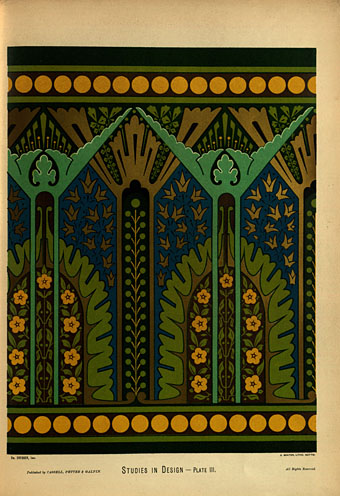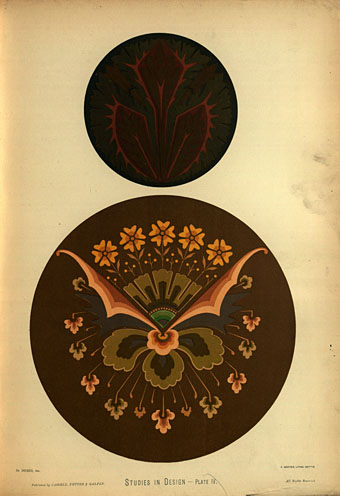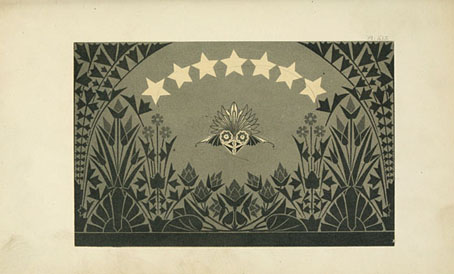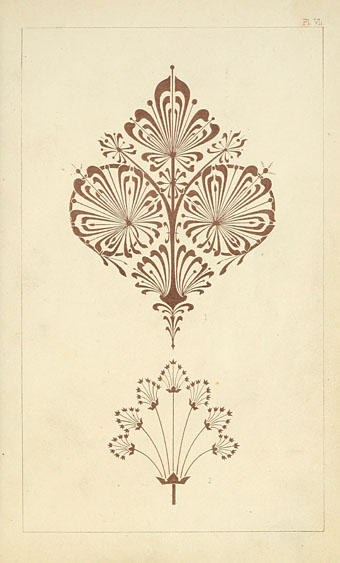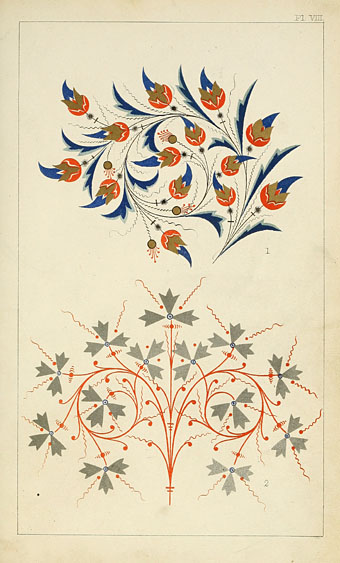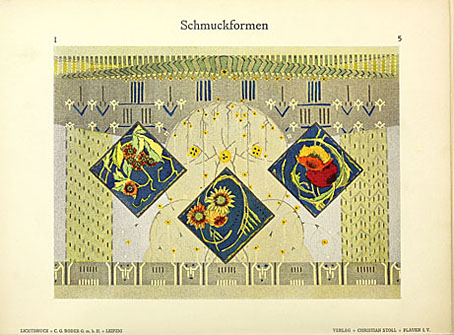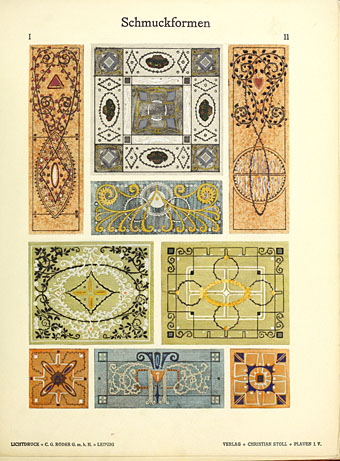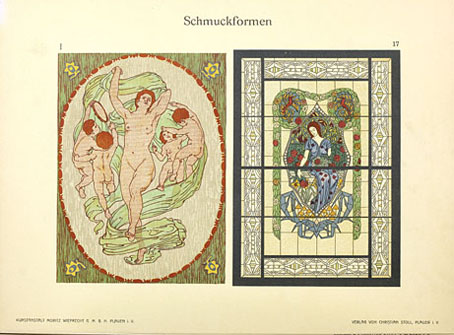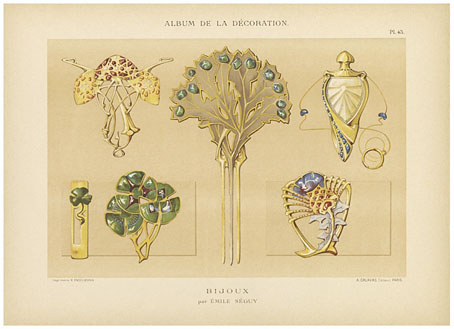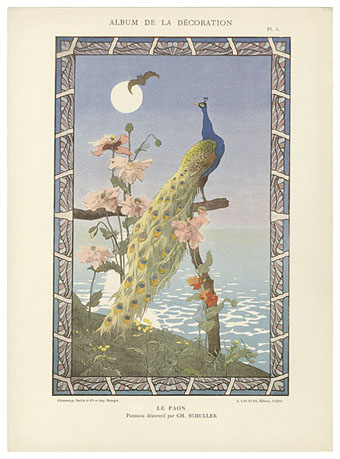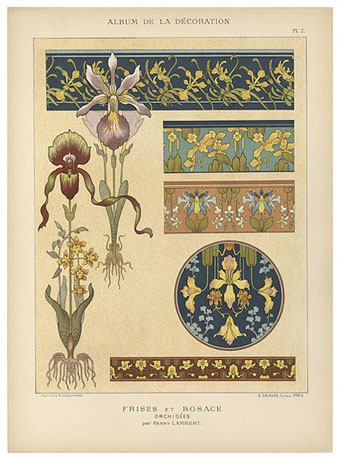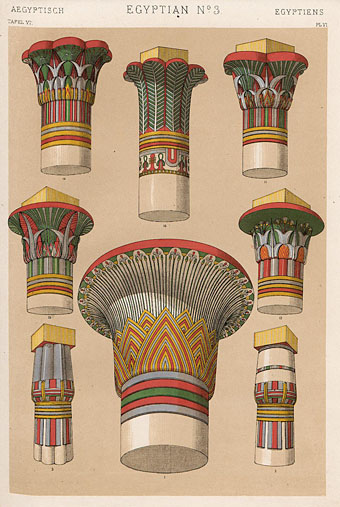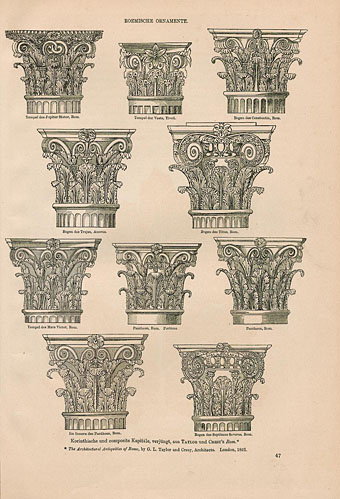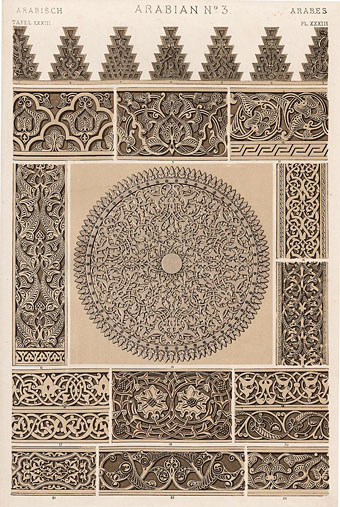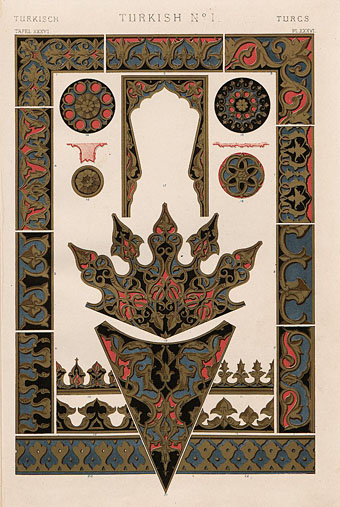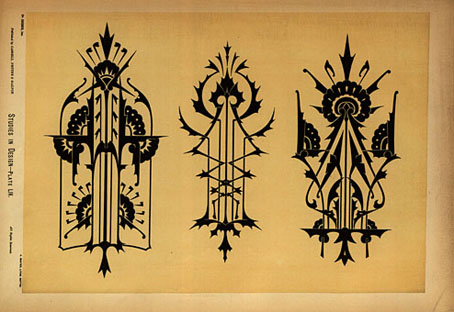
The previous post about Christopher Dresser’s design studies proved popular so here’s another discovery from the same source. A surprise this time was seeing the middle motif on the page above; I have this separated from its neighbours in a collection of Art Nouveau graphics, and used it on the slipcase of a Cradle of Filth CD in 2002. Studies in Design (1876) is a collection of colour plates of Dresser’s design work. Some of these emulate medieval or Arabian/Persian decoration but the most interesting examples for me are Dresser’s more personal pieces. Once you’ve seen a few of these his style is easy to recognise. Thanks to some searching by Mr TjZ I now know that a number of collections of Dresser’s designs are available from (who else?) Dover Publications. More for the shopping list.
